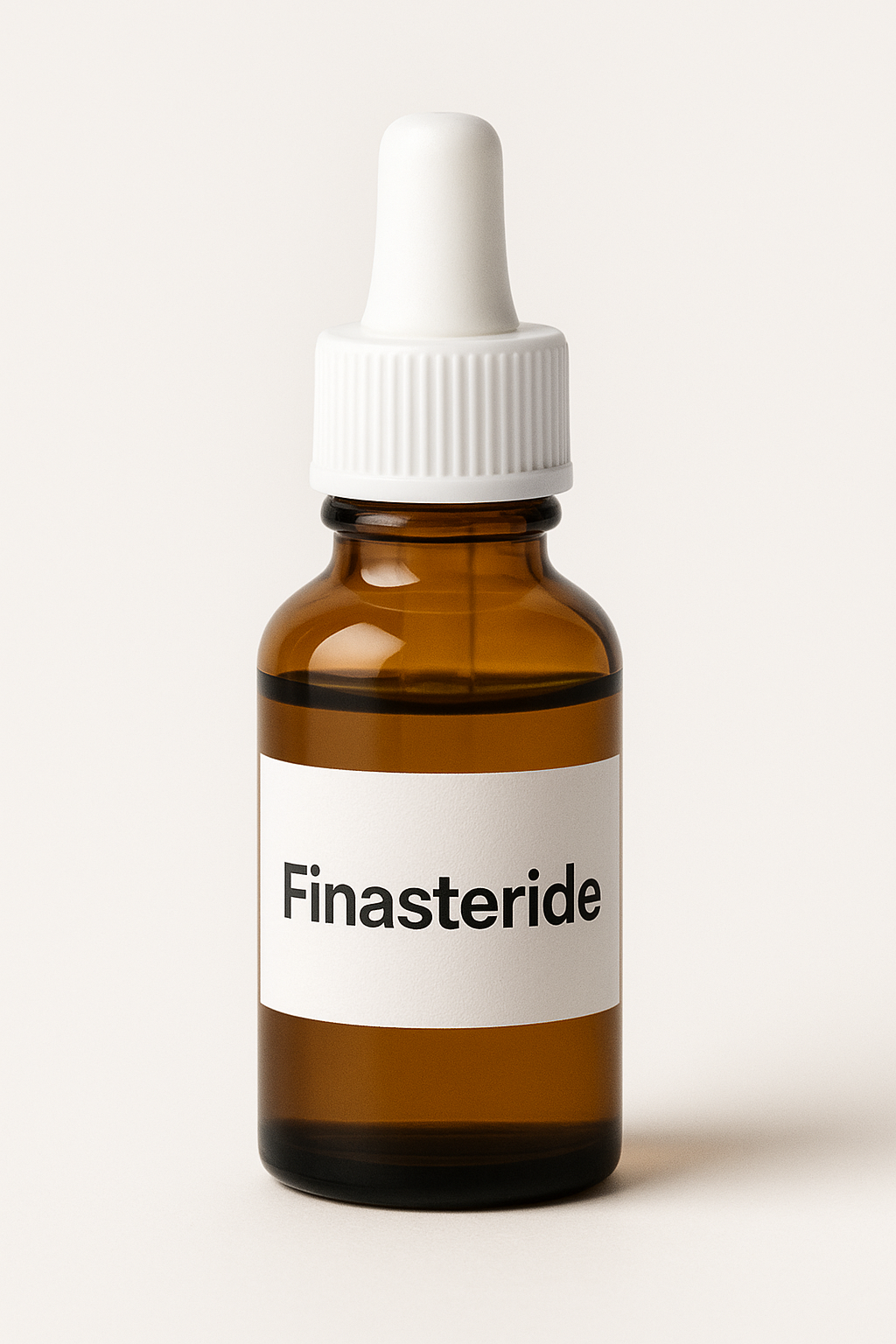Finasteride Results: 2024 Research Update
Are you considering taking finasteride to combat hair loss, but wondering what kind of results you can expect?
Then you have come to the right place! In this article we will give you a comprehensive overview of finasteride results, supported by research.
What can you expect from finasteride?
Based on studies and user experiences, the impact of finasteride on hair loss unfolds over time:
1-3 months: Possible initial hair loss in response to treatment.
3-6 months: Noticeable reduction in hair loss begins.
6-12 months: Research shows significant increase in hair count and sustained reduction in hair loss after one year of consistent use.
This is the average timeline and varies by user. Here is a more detailed look at what happens in each milestone.
Month 1 to month 3
During the first three months of using finasteride, you may notice normal finasteride hair loss, which is part of the normal hair growth cycle.
Month 3 to month 6
As you progress over the next three months, slow hair growth may become visible, filling in bald spots.
Month 6 to month 12
Finasteride Results After 6 Months: Noticeable hair growth, filling in bald spots, and improving overall hair density. Optimal results usually appear after one year.
From month 12
Finasteride results after 2 years: substantial hair growth.
However, if there are no changes in hair growth even after a year, finasteride may not be working.
Finasteride results before and after



Finasteride Results Research
A study evaluated the effectiveness of finasteride and dutasteride on hair loss in women with androgenetic alopecia over a 3-year period and found that both medications showed a statistically significant increase in hair thickness from baseline over the 3-year period.
Another study evaluated the efficacy of oral finasteride therapy associated with an oral contraceptive containing drospirenone and ethinyl estradiol in premenopausal women with female pattern hair loss and found that 62% of patients showed some improvement in their hair loss with the use of finasteride.
A third study conducted in Switzerland found that oral finasteride 1 mg/day was effective in treating hair loss in men, with significant improvements observed in photographs taken of the vertex and frontal areas.
Overall, studies suggest that finasteride may be effective in treating hair loss in both men and women.
How to maximize finasteride results?
To get the most out of your finasteride treatment, consider the following tips: Stick to the prescribed dosage (usually daily or every other day) – follow your doctor's instructions for best results.
Combine finasteride and minoxidil with other treatments, such as the Kadeso Hair Growth Kit, for a comprehensive approach to hair loss, focused on healthy hair growth. Make lifestyle changes to support hair growth, such as:
- Follow a balanced diet
- Coping with stress
- Exercise regularly
- Be patient and consistent with your treatment to regrow hair and
- To maintain its health
Possible side effects and risks
Although finasteride is generally well tolerated, it is important to be aware of possible side effects.
Common side effects include:
- Decreased libido
- Erectile dysfunction
- Ejaculation disorders
Rare but serious side effects include:
- Tender or enlarged breasts
- Depression
- Allergic reactions
- Always consult a doctor before starting treatment and inform them of any existing medical conditions or medications you are taking.
Always consult a doctor before starting treatment and inform them of any existing medical conditions or medications you are taking.
What alternatives to Finasteride are there?
Kadeso Grow Kit
Designed to address hair loss, encourage new growth and support hair vitality.
Why choose our Hair Growth Routine?
- Clinically tested : average of 13,500 new hairs.
- No Harmful Side Effects: Our formula with naturally derived ingredients is designed to be compatible with your body.
- Plant-Powered: Uses stem cell technology and plant-based ingredients.
- Risk Free: 150 Day Money Back Guarantee if no results. Check out these amazing before and after transformations
Low Level Laser Therapy (LLLT)
LLLT uses red light to stimulate hair growth by increasing blood flow and cellular energy in the hair follicles. It is a non-invasive, painless treatment that can be administered through devices such as laser combs or helmets. LLLT is generally safe, but its effectiveness can vary from person to person.
Platelet-rich plasma therapy (PRP)
PRP therapy involves injecting your own platelet-rich plasma into the scalp to promote hair growth. The platelets release growth factors that stimulate hair follicle regeneration. While promising, PRP is still a relatively new treatment and its effectiveness can vary from person to person.
Hair transplant
Hair transplant surgery involves removing hair follicles from a donor area (usually the back of the head) and transplanting them to the balding area. This procedure provides permanent results and can be very effective, but it is also invasive, expensive, and may require multiple sessions. Some surgeons recommend using minoxidil after hair transplant surgery to promote hair growth.
Essential oils
Some natural essential oils, such as rosemary, peppermint, and lavender, have been found to promote hair growth when applied topically. While these oils may be a more natural alternative, their effectiveness may be less consistent and they may take longer to show results compared to other treatments.
Conclusion
Navigating the maze of hair loss solutions can be overwhelming, but understanding the efficacy and potential side effects of treatments like finasteride is crucial.
While it’s a promising avenue for many people with male pattern baldness, it’s essential to weigh the benefits against potential risks. It’s also worth exploring the myriad of alternative treatments available, from topical solutions to natural remedies.
Frequently Asked Questions
Can women use finasteride for hair loss?
Finasteride is not recommended for women, especially those who are pregnant or may become pregnant, due to the risk of birth defects. Women experiencing hair loss may want to consider other treatments, such as minoxidil for women, or consult a dermatologist for alternative solutions.
How long does it take for finasteride to work and when does finasteride start working?
Depends on your body. Most users start seeing the first effects within 3-6 months, with more substantial results after 12 months of consistent use.
Signs that Propecia or finasteride is working may include reduced hair loss, increased hair thickness, and filling in bald spots.
Can I stop taking finasteride once I have achieved the desired results?
Finasteride works to maintain and promote hair growth as long as you continue to use it. If you stop taking it, you may experience a reversal of the positive effects and hair loss may resume within a few months. In addition, you may experience side effects of finasteride after stopping.
Save time, money & hair.
Download our FREE EBOOK temporarily . In which we explain in 5 steps how you can stop your hair loss.
Sources
 Medically reviewed by
Medically reviewed by Sobia Trivedi








